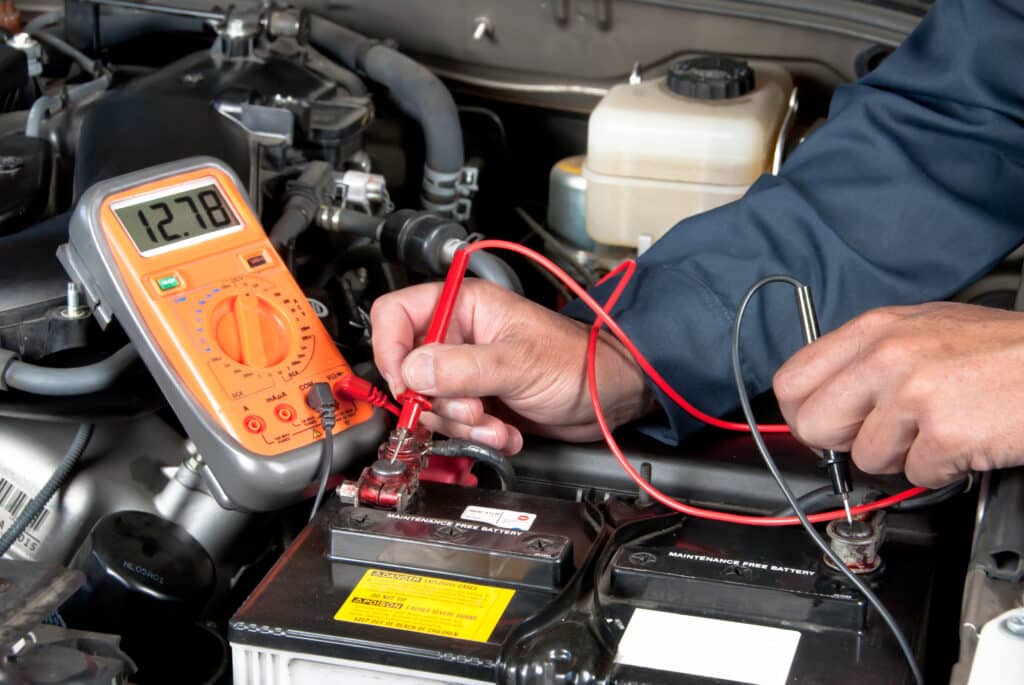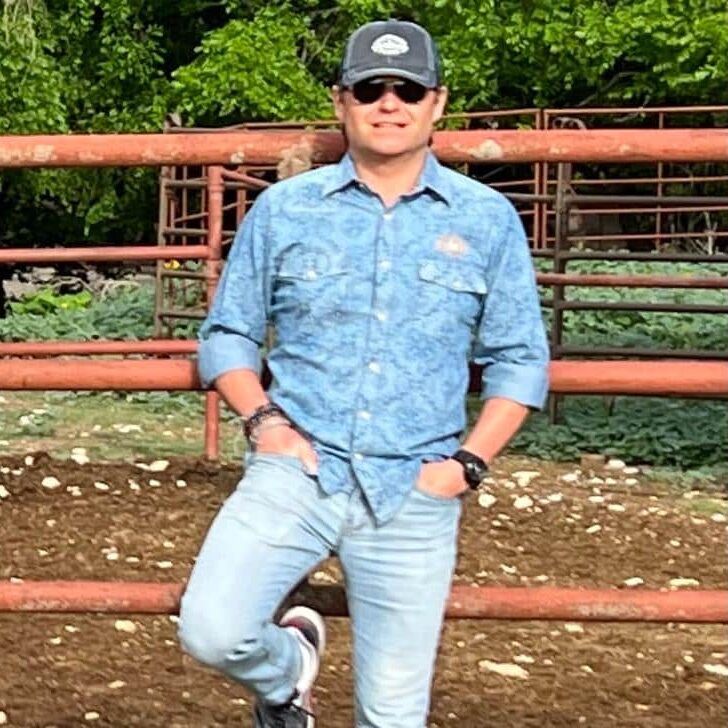In this post we’ll talk about how many volts are in a car battery and what the optimal voltage should be.

Modern car batteries are 12 Volts. However, a 12V battery’s voltage reading can vary a lot depending on its state of charge. A healthy, fully charged so-called “12V” battery should measure 12.6V or higher.
While most cars from the first half of the 20th century originally had a 6V battery, the majority of those 6V systems were upgraded to superior 12V electrics with a 12V battery over the years though. That’s why nowadays you’ll hardly find cars with a 6V battery.
Because a car battery’s voltage says a lot about its health and overall performance, in this article we’ll explain what a good voltage reading is for a car battery. We’ll also help you interpret the possible voltage variations under different conditions. Finally, we’ll also explain how to test car battery voltage and we’ll give practical tips on how to keep your car battery optimally charged.
Car Battery Voltage Readings: What Do They Tell You?
When you measure a 12 Volts car battery, voltage readings can vary between 10 volts and nearly 15 volts depending on circumstances:
A fully charged car battery, with the engine and all electrics switched off, should read 12.6V minimum or higher. 12.4V means the battery has only 75% capacity, while a reading of 12.2V means there is only about 50% power left.
A car battery with only half of its capacity left may just get your car started, but it’s a clear sign that either the alternator isn’t charging the battery correctly or the battery is on its way out and needs to be replaced.
Below 12.2V (50%), your battery will increasingly struggle to get your engine turned over, especially in cold circumstances. A reading of 12V or lower means the battery only holds 25% of its capacity or less. It’s too weak to start most engines and will need to be replaced.
With the engine running and all electrics turned off, battery voltage should be higher than 12.6V. Because the alternator is charging the car battery, it should read between 13.7V and 14.7V.
A voltage of 15V or higher with the engine running is not normal. High voltage can damage your on-board electronics which can be costly to repair. It will most probably lead to overcharging which may damage your car battery or even cause it to explode.
You want to have it checked by a professional as soon as possible.
Which Factors Affect Voltage Reading
Battery voltage readings can be affected by a number of factors:
- With or without the engine running: Car battery voltage readings will be higher with the engine running and the alternator charging.
- Electrics switched on or off: If one or more electrical car components or accessories are switched on, car battery voltage readings will drop. Everything should be switched off before measuring car battery voltage.
- Temperature: Both cold and hot weather or engine heat affects car battery performance and voltage. Cold weather will lead to a decrease in voltage, hot conditions will increase voltage.
- Car battery age: As a car battery ages, voltage decreases because its internals lose chemical efficiency, which results in loss of capacity and voltage.
- Dirty or corroded car battery terminals: Corrosion and dirt are poor conductors and may give false or inconsistent voltage readings.
Car Battery Voltage Level Chart
| Voltage | Capacity % | Status |
|---|---|---|
| ≤12.00V | ≤25% charge | Dead |
| 12.00V | 25% charge | Dead or very weak |
| 12.20V | 50% charge | Weak |
| 12.40V | 75% charge | Weak |
| 12.60V | 100% charge (had time to rest after full charge) | OK |
| ≥12.75V | 100% charge (fresh full charge) | OK |
NOTE: The correlation between voltage and battery condition may slightly vary between different brands and types of car batteries, but it gives a good general indication.
How to Test Your Car Battery Voltage?
You can easily test car battery voltage with a multimeter.
You want to select DC voltage on your multimeter and depending on the type of multimeter meter, the correct voltage range (e.g.: 20V DC).
With the engine and all electrics turned off, hold the multimeter’s probes to the battery terminals. You are now reading the car battery voltage, which should be around 12.6V or higher.
When you do the same with the engine running, voltage should be between 13.7V and 14.7V. That means your alternator is charging like it should.
For more in-depth information on this subject, check out our related posts:
How Often to Check Car Battery Voltage:
We recommend checking the voltage of your car battery at least twice a year or more often if your battery is aging or when you’ve already had issues (car won’t start, dimming lights…).
You also want to keep a close eye on your car battery’s voltage during extreme weather conditions, cold and hot. By checking it more regularly you can replace it in time and avoid being stranded on the side of the road with a dead battery.
Tips to Maintain Optimal Voltage:
To maintain optimal voltage and make your battery last longer, some essential maintenance practices should be followed:
- Keep your battery fully charged: If you don’t use your car often or only drive short distances, you want to consider a battery maintainer or trickle charger to keep your battery in optimal condition.
If a car is not used regularly, its battery will weaken. If you only drive short distances, your car’s alternator doesn’t have enough time to top up your car battery and recharge the power that was lost by starting your car. - Regularly inspect your car battery visually: Check for corrosion or dirt, loose connections, visible damage,…
You want to clean your battery terminals if they are corroded or dirty, repair loose connections and if there is visible damage, it’s best to replace your car battery.
- Protect your battery from extreme temperatures: If possible, park your car in the shade, under a carport or in an enclosed garage to protect it from heat and cold.
Extreme temperatures weaken your car battery to the point that it might not have enough power to start your car. - Don’t put unnecessary strain on your car battery: You don’t want to switch on all your car’s electrics and accessories at once if you can avoid it, especially when your engine isn’t running. Switch off your headlights, rear window defroster and other demanding electrics before starting your engine.
- Switch off all electrics and accessories before you leave your car: When your car’s lights, radio or any other electric device remains switched on, this can drain your car battery overnight.
FAQ’s
How Many Volts is a Fully Charged Car Battery?
The voltage of a healthy, fully charged car battery is between 12.6 volts and 12.8 volts with the engine and all electrics and accessories switched off.
How Many Volts is a Car Battery With the Engine Running?
With your engine running and all electrics and accessories switched off, battery voltage should be between 13.7V and 14.7V.
How Many Volts Does a Car Battery Need to Start the Engine?
Depending on the type of engine and the condition it’s in, generally you‘ll need at least 12.2V to start your engine. An engine will start more willingly in hot ambient temperature because the engine oil will be thinner with less internal friction in the engine as a result.
Sometimes, depending on outside temperature, battery age and condition, your car may get your engine started with only 11.80 V.
10V is definitively not enough to start your car.
How Many Volts Is a Dead Car Battery?
A car battery is considered dead when it drops below 12V. Generally, a voltage this low means the battery has irreversible internal damage and will need to be replaced.
However, with a specialized battery charger it may be possible to revive some dead batteries to the extent that they can be used again for some time.







